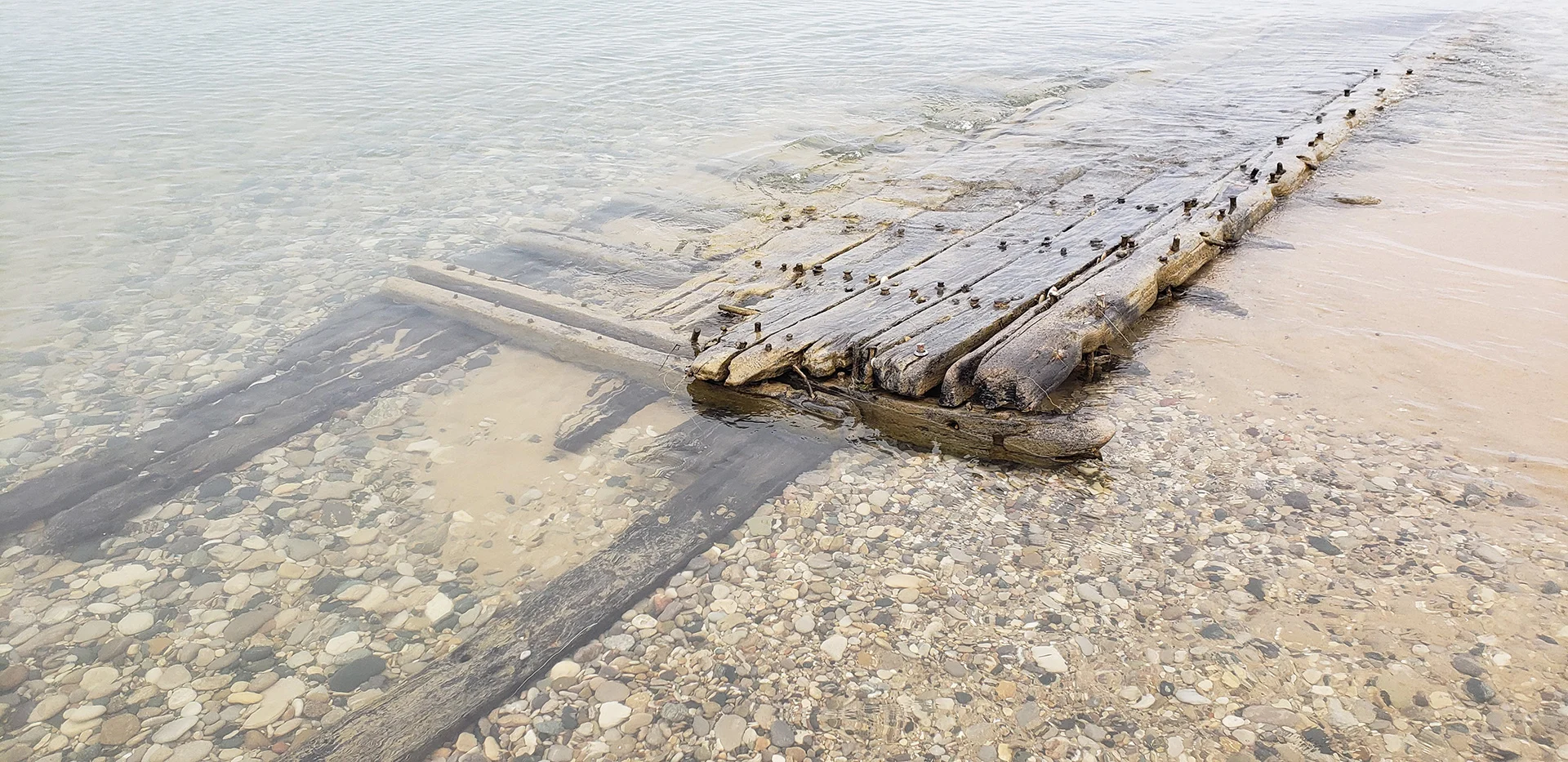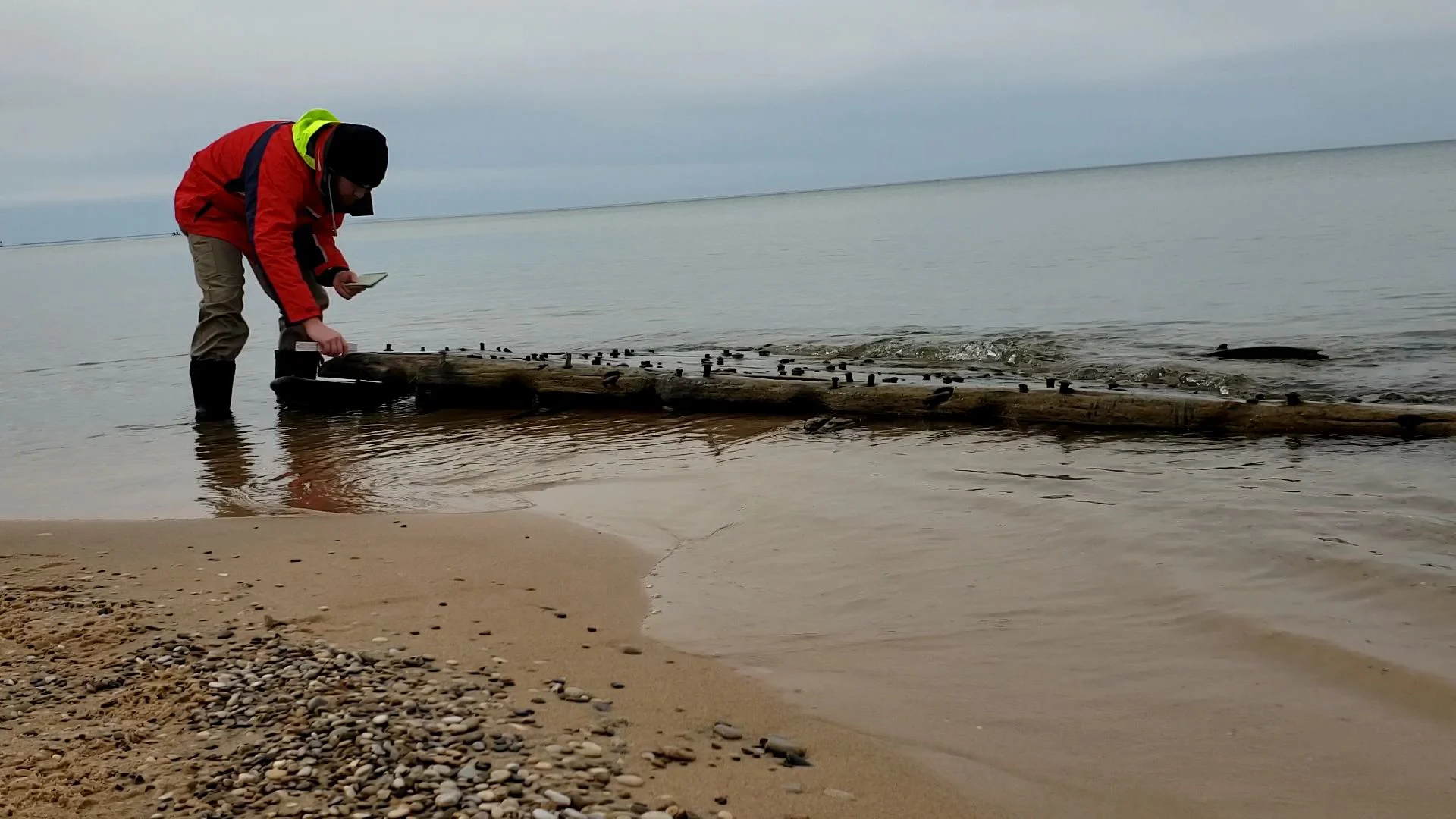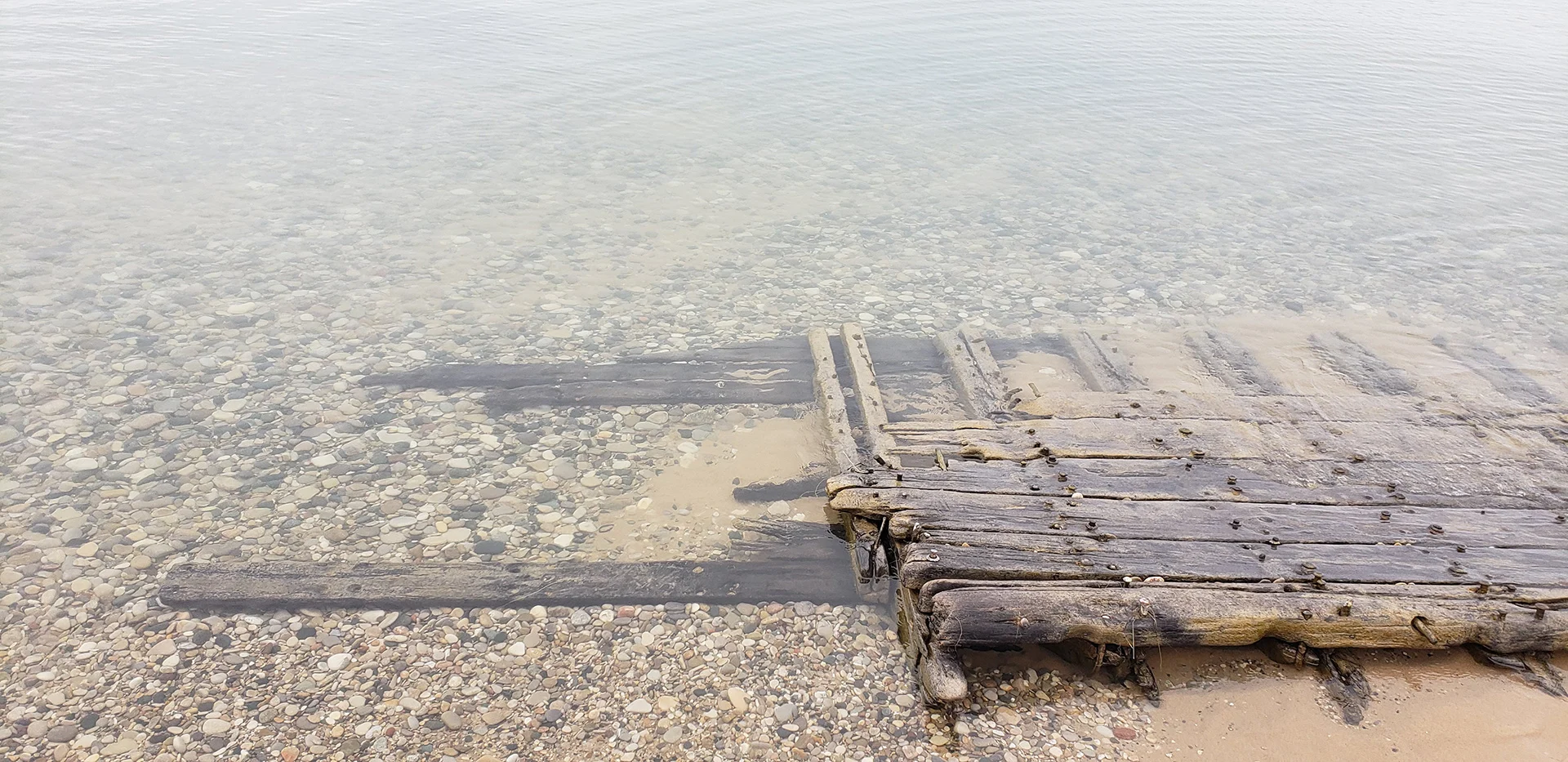
Centuries-old shipwrecks recently discovered in Lake Michigan
High water levels and storms that tracked through Lake Michigan in April contributed to historic shipwreck discoveries.
Beneath the surface of the Great Lakes lie over 6,000 ships that have sunk over the past few centuries and claimed the lives of thousands of sailors. While many of the wrecks remain lodged into lakebeds, often concealed, powerful storms and waves can disrupt vessels that have been dormant for hundreds of years.
On the shores of Lake Michigan, such vessels were recently found. This past April a storm tracked through the northern edge of the lake and created large waves that churned up significant amounts of sand and revealed the remains of a historic ship. The vessel was spotted by a nearby homeowner that took photos and measurements that were later given to the Michigan Maritime Museum and the Michigan Shipwreck Research Association (MSRA).
SEE ALSO: Ghost ship washes up on Irish coast during Storm Dennis
Experts from the MSRA have identified the shipwreck as the R. Kanters vessel that was blown onto shore during a storm on September 7, 1903. It was built in Manitowoc, Wisconsin in 1873 and served as a workhorse hailing cargoes, such as grain, throughout the upper Great Lakes.
The MSRA reported a second vessel that washed up on a Michigan beach north of Ludington on April 24. Experts say it could be any one of five possible vessels built between 1841 and 1862, none of which were previously known to be photographed. Eric Harmsen, the manager of the Port of Ludington Maritime Museum led the investigation while collaborating with MSRA.

Photographs and measurements of the shipwreck were taken in hopes that it could be identified. Credit: Eric Harmsen, Port of Ludington Maritime Museum
The Port of Ludington Maritime Museum says that high water levels tend to reveal long-buried shipwrecks and hundreds of vessels are known to be grounded in Lake Michigan. Lakes Erie, Huron and Michigan all experienced record-high water levels in April, according to data released by the U.S. Army Corps of Engineers. This trend will continue into the summer season since Lake Michigan is forecasted to exceed its previous water level record by 10-18 cm each month through July.

The shipwreck was discovered north of Ludington on April 24. Credit: Eric Harmsen, Port of Ludington Maritime Museum
CLIMATE CHANGE AND THE GREAT LAKES
The Great Lakes have seen numerous impacts from the changing climate, with record high water levels being one of the most widely discussed challenges. Warming atmospheric temperatures are expected to create rapid transitions between extreme high and low water levels in this basin, due to changes in the global climate and the variability of the hydrological cycle.
Climate change has also reduced the amount of ice cover on the Great Lakes during the winter. Ice cover can help protect the shoreline from the choppy waters, but without this natural buffer, the shoreline can face towering waves. Parts of the Lake Michigan waterfront faced waves reaching 7 metres high during a mid-January storm in 2020, a more frequent threat to residents facing increased shoreline erosion and damages to lakefront properties.
SEE ALSO: Halloween storm moves 101-year-old Niagara River wreck
When asked if climate change will make it harder to preserve the region’s rich maritime history, Harmsen explains that it is a complex situation and difficult to predict future impacts.
“It is possible that the high water levels we are experiencing along with high wind and waves could damage some shallow water shipwrecks. The high lake level has also led to flooding problems in many communities along the lake, which has impacted multiple history-related maritime locations such as Fishtown in Leland, and our own Port of Ludington Maritime Museum,” says Harmsen.
While some delicate shipwrecks are particularly at risk from the varying water levels and turbulence from storms, both of the shipwrecks that were found this April occurred because of severe weather.
“The high lake levels and erosion have also revealed several shipwrecks and pieces of wreckage recently, which when documented, can help us to fill in some of the gaps in the historical record,” Harmsen explains.
Top Photo Credit: Eric Harmsen, Port of Ludington Maritime Museum











